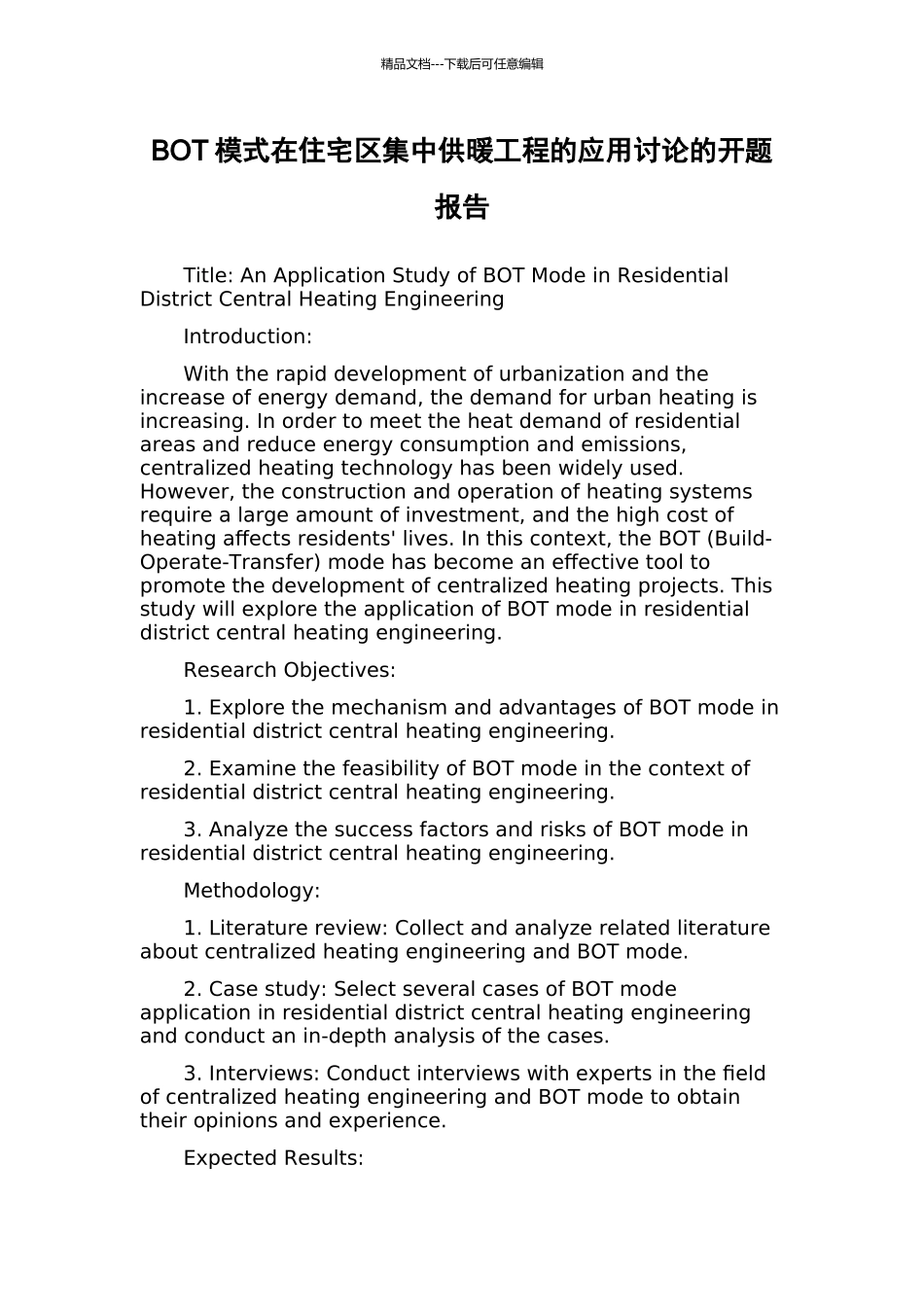精品文档---下载后可任意编辑BOT 模式在住宅区集中供暖工程的应用讨论的开题报告Title: An Application Study of BOT Mode in Residential District Central Heating EngineeringIntroduction:With the rapid development of urbanization and the increase of energy demand, the demand for urban heating is increasing. In order to meet the heat demand of residential areas and reduce energy consumption and emissions, centralized heating technology has been widely used. However, the construction and operation of heating systems require a large amount of investment, and the high cost of heating affects residents' lives. In this context, the BOT (Build-Operate-Transfer) mode has become an effective tool to promote the development of centralized heating projects. This study will explore the application of BOT mode in residential district central heating engineering.Research Objectives:1. Explore the mechanism and advantages of BOT mode in residential district central heating engineering.2. Examine the feasibility of BOT mode in the context of residential district central heating engineering.3. Analyze the success factors and risks of BOT mode in residential district central heating engineering.Methodology:1. Literature review: Collect and analyze related literature about centralized heating engineering and BOT mode.2. Case study: Select several cases of BOT mode application in residential district central heating engineering and conduct an in-depth analysis of the cases.3. Interviews: Conduct interviews with experts in the field of centralized heating engineering and BOT mode to obtain their opinions and experience.Expected Results:精品文档---下载后可任意编辑1. Clarify the mechanism and advantages of BOT mode in residential district central heating engineering.2. Identify the feasibility of applying BOT mode in residential district central heating engineering.3. Analyze the success factors and risks of applying BOT mode in residential district central heating engineering.Conclusion:The application of BOT mode in residential district central heating engineering has the advantages of reducing investment risks, reducing energy consumption, and optimizing resource allocation. However, in the specific implementation process, various risks cannot be avoided. Therefore, it is necessary for relevant parties to work together, establish reasonable risk allocation mechanisms, and conduct scientific and reasonable project management to ensure the successful implementation of BOT mode.

